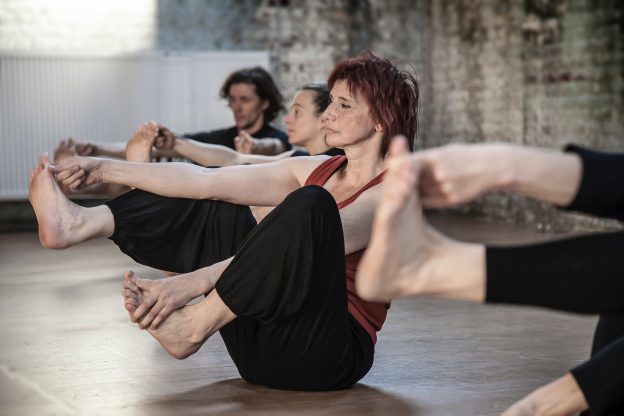Grace is one of the benefits that I offer to entice potential students to come and try out my classes, but I suspect for many people achieving physical grace may seem too distant a possibility. It is a lovely word, soft in the mouth and on the ear, well suited to its multiple meanings: ease, elegance, beauty, kindness, the expression of gratitude, the mercy of a benevolent god. As an aspect of well-being it is most obviously applied to movement that is both well-organised and lovely to watch – in nature it is present both in the pounce of the predator and the speed of the prey.
If you pause for a moment and think about what grace means to you, an image may come of the fluid elasticity of a dancer, an acrobat defying gravity, a jellyfish pulsing through water, perhaps the wind gently weaving through the upper branches of a tree. Fred Astaire so embodied grace that it infused his every movement, he seemed to be dancing even when he was merely walking. This clip of Astaire with Bing Crosby contrasts them nicely – Bing is hardly a clumsy man but everything Fred does has an extra element of lightness and fluidity – perhaps most noticeable when you compare the way each man uses his neck and upper back.
Grace in nature is not necessarily conscious – a frond in the water, a feather dancing in the wind – even the elegance of a stalking cat or a snake rising up in defence is hard-wired into each creature’s nervous system. For us physical grace is not innate, instead it must be actively pursued and maintained. Many of us develop our motor skills only to the level needed in order to “get by” in our daily lives; if we can run for the bus without falling, and dance without tripping over our own or someone else’s feet we are happy. Social grace requires an active commitment to kindness and consideration of others, physical grace requires conscious attention to developing our awareness of how we move through life.
Many of those who embody grace in their everyday actions have a daily practise of some kind; they are actively committed to a process of continuous learning and self-development. There are many wonderful practices available, something to suit every personality and level of ability. You will not be surprised that I think we can all benefit from actively engaging in a method for improving mobility and structural health. Which technique you choose is less important than the commitment to practise it regularly, and the attention, encouragement and support of a teacher who is personally committed to your learning. Tai Chi, the Alexander Technique, Aikido, Judo, Pilates, Yoga, dancing of all kinds; these are all excellent paths to grace.
I was drawn to Feldenkrais because it is enormous fun; I had to give up my dance classes when I developed sciatica, and although I fell in love with Tai Chi as a more-than-acceptable substitute, I missed all the leaping about, and so it was a joy to discover the exhilaration of rolling about on the floor in all directions and discovering my balance in new positions – including upside down. Feldenkrais is meta-learning, i.e. it was specifically designed to accelerate the process of learning itself, making it an ideal partner for any of the practices listed above – some people even combine Feldenkrais and Alexander, although on the surface they might seem to cancel each other out.
Moshe Feldenkrais had a deep understanding of structure-in-motion that came from a long career in engineering, practical physics, and in teaching judo; but he also had a clear understanding of the importance of simply having fun as a fundamental aspect of the way humans learn new stuff best, always inspired by the way children learn through play, and enhanced by his wife’s extensive training in child development. He left behind an archive of hundreds of movement sequences, the vast majority of which directly guide the student towards the attainment of greater elegance, fluidity and sensory awareness in the way she or he approaches some everyday activity. To fully embody their new-found grace the student must bring this increased level of self-awareness out of the studio and into their daily life. This is why we stand, observe ourselves, and then walk for a few minutes, at the end of each Feldenkrais lesson – to begin to connect the new consciousness to the established unconscious programmes; the unfamiliar sensation to the over-familiar habitual action; the new awareness of ease, freedom and fluidity to the way we interact with gravity and the surface of our earth. Allow yourself to believe that you can experience true grace for yourself, find a practise that does not require an effort of will to commit to–because commitment is a non-negotiable requirement for conscious evolution–and discover how to dance your way through life.
